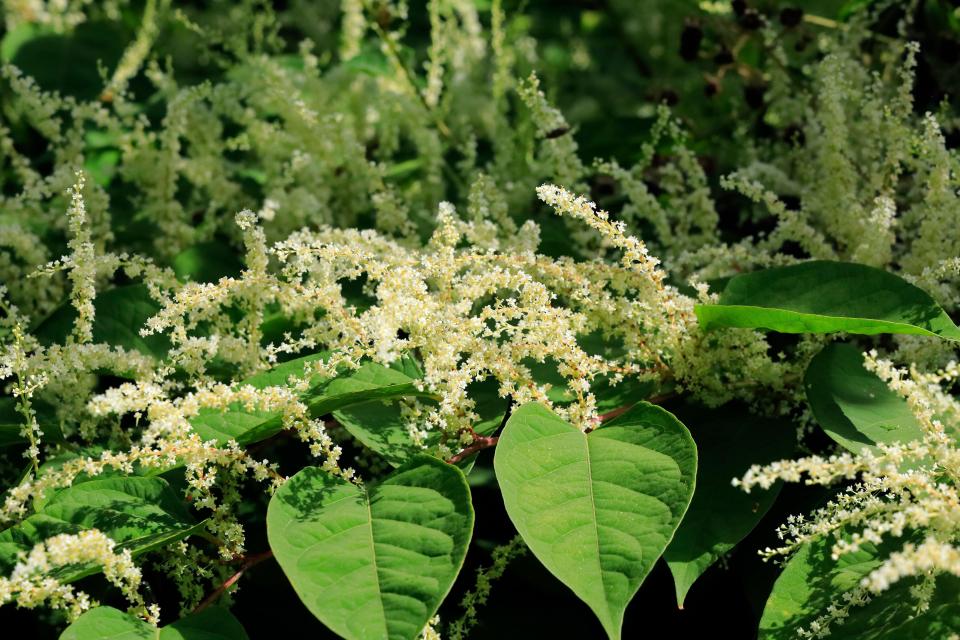JAPANESE Knotweed is the UK’s most invasive plant, and it wreaks havoc on homes across the country.
With over 100,000 infestations every year, the pesky plant can damage buildings and knock thousands off properties.
An interactive online map has been revealed and lifts the lid on where this fast-spreading menace is causing the most destruction.
Leading the charge in England is Bristol, officially crowned the knotweed capital with a jaw-dropping 33.91 infestations per square mile.
Hot on its heels are Merseyside (11.87), Greater London (7.74), and Lancashire (7.25), making it clear this isn’t just a rural issue – it’s a national one.
Wales isn’t spared either.
read more on japanese knotweed
Newport tops the 2025 list with a staggering 1,747 known cases, closely followed by Cardiff (1,208) and Bridgend (1,209).
And while cities are bearing the brunt, rural areas like Gwynedd, Rhondda Cynon Taf and Merthyr Tydfil aren’t far behind.
The Environet map isn’t just for nosy neighbours – it’s a vital tool for homeowners, buyers and surveyors.
Just pop in a postcode and see your area’s risk level at a glance: yellow for low, orange for moderate and red for high.
And if you spot a fresh outbreak? You can upload a photo using the ‘Add Sighting’ feature and help grow the UK’s biggest knotweed database.
Japanese knotweed isn’t just ugly – it can damage buildings, knock thousands off property values and even derail mortgage applications.
Knowing what you’re dealing with is essential, especially if you’re buying, selling or developing.
And for those wanting a deeper dive, Environet’s KnotSure service combines expert insight with the power of the heatmap.
The country saw a growth spurt in June after heavy rainfall after a long dry spell.
Sold property expert Terry Fisher warned: “These conditions can result in “growth spurts” for the invasive plant which can cause a plethora of problems for homeowners.
Mr Fisher continued: “We’ve been basking in the glorious sunshine, but now the rain has made an epic return.
“This combination of wet and warm creates the ideal conditions for Japanese knotweed to thrive and even go into a super growth.
“Meaning homeowners might unearth a beast in their gardens this spring,” reported The Argus.
What does Japanese Knotweed look like?
Japanese Knotweed can grow at up to 10cm a day in the summer and reach up to 7ft high.
Gardening expert, Kendal Platt, who runs Adventures with Flowers, said: “The shoots look similar to bamboo shoots growing 2- 3metres tall.
“They are hollow and coloured red in the Spring and turn green in the summer.
“Their leaves which appear in Spring are shield or heart-shaped with a pointed tip and grow at staggered intervals along the length of the shoots.
“They can grow up to 20cm long and die back in winter leaving just the brown dead looking canes above ground.
They further explained that the flowers appear in late summer as bunches of creamy white flowers growing in amongst the leaves.
How to spot a Japanese Knotweed
HOW to spot Japanese Knotweed and what to do if you find it.
GARDENING expert, Kendal Platt, who runs Adventures with Flowers, said: “Japanese knotweed shoots look similar to bamboo shoots growing 2- 3metres tall”.
They are hollow and coloured red in the Spring and turn green in the summer.
Their leaves which appear in Spring are shield or heart-shaped with a pointed tip and grow at staggered intervals along the length of the shoots.
They can grow up to 20cm long and die back in winter leaving just the brown dead looking canes above ground.
The flowers appear in late summer as bunches of creamy white flowers growing in amongst the leaves.
It spreads through its rhizomes (underground root system) which are dark brown on the outside and orange on the inside.
They can burrow up to 3 metres under ground causing damage to buildings and break easily, so can be hard to remove completely.
If you find it in your garden it’s important to call in a specialist Japanese Knotweed removal company.
They use a glyphosate based herbicide which when injected into the plant at the right time of year can kill it.
It may take a few years of repeated application to eradicate the plant completely from your property which is why many removal companies recommend a glyphosate treatment programme over a number of years.












